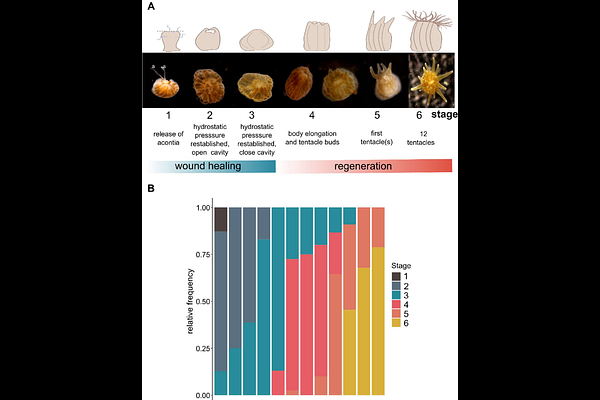Aiptasia oral regeneration is host-controlled but supported by symbiont-derived photosynthates

Aiptasia oral regeneration is host-controlled but supported by symbiont-derived photosynthates
Cai, J. B.; Bedgood, S.; Weis, V. M.; Pita, L.
AbstractThe study of oral regeneration in the sea anemone Exaiptasia diaphana (commonly called Aiptasia) - a prominent model for the study of coral-algal symbiosis - offers the unique opportunity to investigate the role of symbionts in regeneration. Algal symbionts have the potential to affect healing and regeneration by supplementing host nutrition and/or modulating host immune responses. Here we revisited the descriptions of Aiptasia oral regeneration from the 1970s with modern imaging techniques. Upon oral amputation, the anemones progressed through six distinct and repeatable stages of wound healing and regeneration, a process that was completed within a week. We followed regeneration in symbiotic anemones (i.e., associated with native dinoflagellate symbionts) in comparison to aposymbiotic anemones (i.e., lacking algae), and symbiotic anemones kept in the dark (i.e., blocking photosynthesis). In most symbiotic anemones under normal light, tentacle buds appeared within 32 hours post-amputation, whereas in aposymbiotic anemones and symbiotic anemones kept in the dark buds appeared 12 hours later. This pattern suggests that the contribution of symbiont-derived photosynthates to host nutrition shortened regeneration time. Our study provides the basis for further research on the underlying molecular processes in Aiptasia oral regeneration, for comparative studies of different symbiotic cnidarians and for investigating the relative role of host and symbionts in different developmental processes such as whole-body morphogenesis during asexual reproduction.